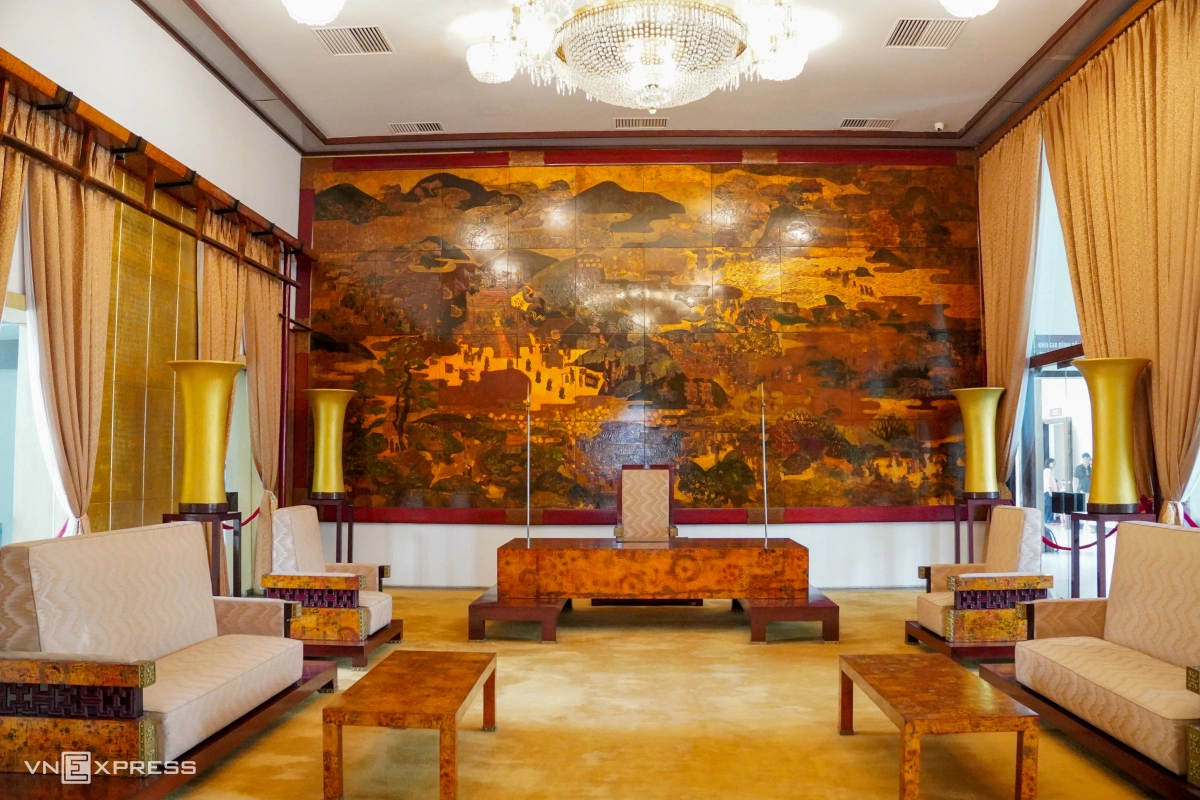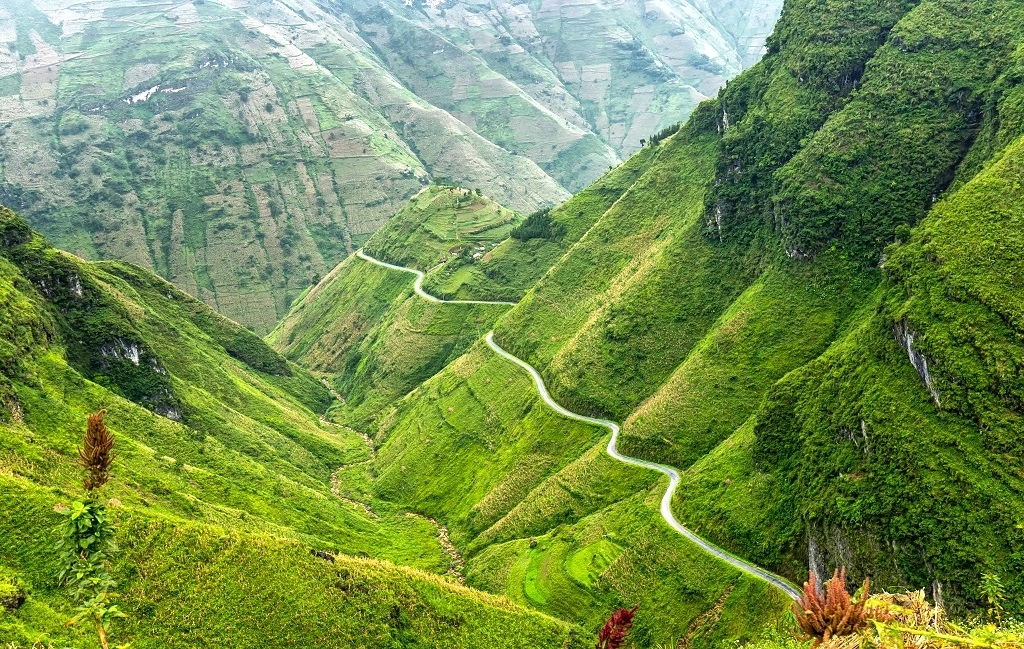
Independence Palace Travel Guide - Historical Landmark of Ho Chi Minh City
🗺️ Independence Palace Travel Guide - Historical Landmark of Ho Chi Minh City
Independence Palace is not only architecturally beautiful but also a symbol of peace and reunification. It is the most visited attraction in Ho Chi Minh City, especially on April 30th.
📋 Basic Information
- 📍 Address: 135 Nam Ky Khoi Nghia Street, Ben Thanh Ward, District 1, Ho Chi Minh City, Vietnam
- 🌍 Coordinates: 10.776944° N, 106.695274° E
- 🕐 Opening hours: 8 AM - 4 PM daily
- 💰 Ticket prices:
- 40,000 VND: Palace tour only
- 65,000 VND: Palace + exhibition hall tour
🏛️ General Introduction

Independence Palace (also known as Reunification Palace) is one of Vietnam’s most important historical landmarks. This site has witnessed many significant historical events, especially the reunification of the country on April 30, 1975.
🎯 Main Attractions
📜 Reception Hall

The Reception Hall was where ambassadors presented their credentials to the President of the Republic of Vietnam before 1975.
The room’s interior was designed by artist Nguyen Van Minh, primarily using Japanese-style lacquerware techniques. The highlight is the “Binh Ngo Dai Cao” painting consisting of 40 pieces, depicting the peaceful scene of the Vietnamese people in the 15th century, with King Le Loi announcing victory over the Ming army at the center. Eight symbolic torches line the walls, lit during important diplomatic ceremonies.
On April 18, 1975, the final credential presentation ceremony took place here, when President Nguyen Van Thieu of the Republic of Vietnam received Japanese Ambassador Extraordinary and Plenipotentiary Hiroshi Hitomi.
🍽️ Banquet Hall


The Banquet Hall hosts events with a capacity of over 100 guests. The space uses warm yellow tones as the main color scheme, creating a solemn and intimate atmosphere. A painting titled “Beautiful Mountains and Rivers, Peaceful Grass and Trees” by architect Ngo Viet Thu hangs in the central position.
On March 1, 1975, President Nguyen Van Thieu held his final banquet here for the American delegation.
🏗️ Special Architecture

Large glass windows between the corridors provide natural light for the entire building. This is also a popular check-in spot for young visitors.
Duong Thi Dao, 22, a student at the People’s Security University, arrived early with friends to queue for tickets to visit Independence Palace on April 17th. According to Dao, despite the large crowds, everyone was excited to visit this historical site during the 50th anniversary of national reunification.
“Independence Palace is a place that marks many important events in our nation’s history. I come here to take photos as souvenirs and share with my family” - Dao said
🛡️ Fortified Basement

The basement is one of the areas that attracts the curiosity of many visitors to Independence Palace. The structure was designed by engineer Phan Van Dien, built solidly with a length of 72.5 m, width from 0.8 to 22.5 m, and depth from 0.6 to 2.5 m. Rooms in the basement are connected by small concrete pathways, with steel-clad walls 5 mm thick and a separate ventilation system.
Area 1 is the command center, including offices for the staff, radio station, telephone exchange, code room, and communication room. All equipment was provided by the U.S. government in the 1960s.
Area 2 (pictured below) is located at a depth of 2.5 m, with concrete walls 1.6 m thick, capable of withstanding the impact of bombs weighing up to 2,000 kg. In emergencies, the President could move down here via a staircase directly connected from the second-floor office. This area is currently not open to visitors.

The President’s war command room is located on the first basement floor, where the situation was monitored and orders were issued during the most tense moments. This small but solid room, with thick walls, was equipped with the most modern communication systems of that time provided by the U.S. Inside are a desk, military maps, encrypted phones, and communication equipment, allowing the President to operate remotely when ground conditions were no longer safe. This was considered the “backup brain” of the Palace during the final days of the Saigon government.

Following the exit from the basement, visitors will see the M151A2 Jeep - the vehicle that carried President Duong Van Minh to Saigon Radio Station at noon on April 30, 1975. There, he read the unconditional surrender statement, officially ending the Saigon government and opening the moment of national reunification.
✈️ Rooftop and Historical Artifacts

After touring the entire Palace, visitors can go to the rooftop to admire the F-5E aircraft - an artifact associated with the event that contributed to victory in the final days of the war. On April 8, 1975, pilot Nguyen Thanh Trung controlled the F-5E from Bien Hoa, bombing Independence Palace. The attack only caused minor damage, with one bomb hitting the roof target but only exploding at the front, causing subsidence in part of the roof area.
The bomb damage marks are preserved and marked by the relic management board so visitors can better visualize the event.

⚔️ Two Symbolic Tanks
The must-see attraction when visiting the Palace, on the left exit, is two tanks numbered 843 and 390. The image of these two tanks ramming through the main and auxiliary gates of Independence Palace at noon on April 30, 1975, became a historical symbol of the nation, closing the Ho Chi Minh Campaign with total victory and opening the era of national reunification.

📷 Independence Palace Photo Album
Below is a collection of beautiful images of Independence Palace for your reference:
🏛️ Architecture and Exterior
Architecture and Exterior



📜 Reception Hall and Banquet Hall
Reception Hall and Banquet Hall



🛡️ Fortified Basement
Fortified Basement



✈️ Rooftop and Artifacts
Rooftop and Artifacts


🧭 Travel Guide
Independence Palace is a must-visit attraction in Ho Chi Minh City, especially during major holidays. The Palace is open all days of the week, including holidays and Tet, except for special events. Ticket sales are from 8 AM to 3
PM, and visiting hours are from 8 AM to 4 PM.There are two types of tickets: 40,000 VND for Palace tour only (excluding the exhibition hall “From Norodom Palace to Independence Palace 1868-1966”) and 65,000 VND for both Palace and exhibition hall tours. First-time visitors should experience both the Palace and exhibition hall tours to learn more about history.
📝 Conclusion
Independence Palace is not just an ordinary tourist destination but also an important historical symbol of Vietnam. Visiting the Palace not only allows tourists to admire the unique architecture but also learn more about the nation’s history. With its central location in Ho Chi Minh City, Independence Palace is a must-visit destination for anyone wanting to learn about Vietnamese history and culture.
📍 Note: Allocate 2-3 hours to fully tour the Palace areas. Avoid peak hours (10 AM - 2 PM) for the best experience.
Photo: Cao Ky Nhan







